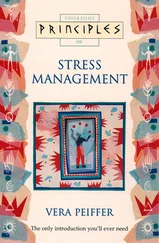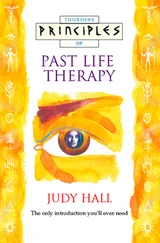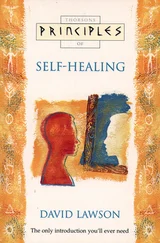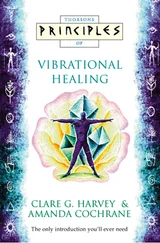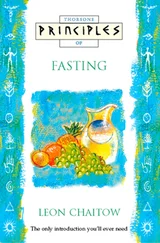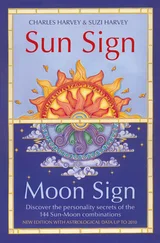Every cycle of the heavens and every process of manifestation unfolds itself through a number of distinct phases, each with its own characteristics. This archetypal process was encapsulated by early astrologers in the cycle of the zodiac, or literally the ‘circle of the animals’, from the Greek zoon, as in a zoo.
This cycle describes twelve distinct phases of any cycle. Each phase is given a different ‘sign’, usually an evocative animal symbol (see Chapter 6) that encapsulates and acts as an aide memoire to the essential meaning of that phase. As such this zodiacal process was projected on to the pattern of the stars, the constellations, to mark out the phases of the primary cycle in ‘the Above’. This sequence of signs was probably first used to describe the cycle of the seasons, which followed the apparent annual movement of the Sun around the Earth. This cycle, measured from the Spring equinox or First Point of Aries, is still the primary circle used by astronomers.
So that when an astrologer is asked ‘what sign are you?’ she might answer ‘I have the Sun in Capricorn, the Moon, Mid-Heaven, Venus and Jupiter all in Aquarius and Gemini rising’. This identifies the phases of this universal cycle that are being emphasized by each the different dimensions of the individual.
Apart from the zodiac which describes the basic cycle of seasonal manifestation, each fixed star has its own cycle of rising and culminating. The times in the annual cycle at which specific fixed stars, such as Sirius, rose and set just before or after the Sun were considered very important. The nature and significance of each star was studied in great detail, though this is beyond the scope of this book.
The main focus of astrological study focused upon the wandering stars, the planetary gods. Each planet has its own specific cycle. Indeed all our normally used time frames are related to planetary cycles:
a day is the time it takes for the Earth to rotate on its axis;
a week is a quarter of a lunar cycle;
a month is a Moonth, or the time from one New Moon to the next;
a year is the time it takes for the Earth to go around the Sun.
Even if you are not aware of the association, you are already familiar with some of the principles of astrology. The seven days of the week, which are part of the very foundation of the way the whole world organizes its time, are named after the seven planets known to the ancient world:
Sun-day, the day of the Sun
Mon-day, the day of the Moon
Tuesday, – in French Mar-di – the day of Mars
Wednesday – in French Mercre-di – the day of Mercury
Thursday – in French Jeu-di – the day of Jove or Jupiter
Friday – in French Vendre-di – the day of Venus
Saturday – the day of Saturn
The English names are the Teutonic equivalents of the same gods.
The birth chart appears to be a static ‘thing’ that endures for a lifetime, but the cycles of the planets unfold the chart’s potential. A planet returns to its original position at birth when it completes a cycle, although the planets complete their journey around the zodiac in different periods of time. Jupiter’s cycle, which unfolds our search for meaning and expansion, is about 12 years long. Saturn’s cycle takes about 29 years to complete. The famous Saturn Return is a time of growing up, taking responsibility, and making commitments. The second Saturn Return, which occurs at the age of 58, takes us into the last chapter of life when we must examine what our life has achieved and when we must face the inevitability of our death. The Uranus cycle is 84 years long. During the half-way point of this planet’s journey around the zodiac, at the age of about 40 (give or take a few years due to orbital eccentricity), people have their mid-life crisis when repressed desires erupt to bring either a chaotic or newly creative period. In a very dramatic way, life may never seem the same after the Uranus opposition.
In a sense, life is never the same after any of the planets complete their cycles, and this is because the chart has unfolded more of its potentialities, during which time choices have been made, directions have been taken, doors have been opened – and closed.
It is important to recognize that the planetary archetypes express themselves in different ways throughout all levels of cosmic and human life. To take an example, the planet Mars will express its assertive, potent, territorial, separative, propelling nature:
in the physical world as heat, energy, fire, explosions;
in the plant world as thorns, poisons, acids, stinging species such as nettles;
in the animal kingdom as territoriality, predatory activity, the mating instinct;
in the body as the immune system, and also in the occurrence of accidents, cuts, bruises, inflammation, and fever in the body which harm – and which activate the immune system;
at an emotional level as anger, retaliation – saying ‘no’
at the level of will as self-assertion, competitiveness, the will to win, courage;
at the level of intellect as singularity, cutting out superfluous thought, emphasizing, and decisive communication;
at the mystical level as the sword of truth.
These principles, gods, archetypes and myths show and express themselves at every level. In the physical world they can be detected at work in the ever-changing climate and the occurrence of storms, floods, earthquakes, natural disasters. In the individual, they can be observed in life themes and in the output of one’s work. For example, Queen Elizabeth, with Saturn exactly conjunct the uppermost point of her chart (status, public responsibility), has stood for tradition and the supreme rule of monarchy. The comedian Spike Milligan’s life, with Uranus exactly rising in Aquarius, has expressed the opposite: eccentricity, anarchic humour, poking fun at the class system, rules and bogus certainty. As you become more familiar with the planetary archetypes, you can begin to see the body of the cosmos and the body of man alive and expressing the interplay of all these energies, as in a great mythological drama.
The ancients spoke of the Creator as the Great Geometrician. This is because the greatest minds in all the ancient cultures observed that all living entities developed, or emerged from potential into manifestation, through an ordered, logical and numerical process. Pythagoras was the first to develop the science of number to a sophisticated level. He and his followers learned to think in numbers, to reflect upon realities in their progressive states. And to these progressive states they gave the names of numbers.
The Pythagoreans believed that the first 10 numbers contained the secret of all things, and that each of the first decade of numbers was a primary creative principle in the Cosmos, indeed a God.
Number in the deepest sense relates to the creative processes of the cosmos. With regards to the birth, flowering, and death of any entity, number describes the archetypal relationship between part and whole.
Archetypal number is at the heart of astrology. We come to understand ‘two-ness’ in the two-fold division of positive and negative signs, in the ascendant (self) – descendant (other) axis, which divides the chart into an upper horizon section (more extrovert) and lower horizon section (more introvert). We grapple with ‘three-ness’ in the three modes of expression – cardinal, fixed and mutable; and with ‘four-ness’ in the four elements – fire, earth, air, water – and also in the four angles of the chart, ascendant (east), descendant (west), midheaven (south), and immum coeli (north). The 12 signs of the zodiac are made up of the three modes and four elements. And the unfolding cycles of the planets express themselves through number in the aspects. The study of astrology is the study of the rhythms of the universe as they relate to the individual, and rhythm is number. From this point of view, astrology connects us to the inner reality of things, if we are sufficiently sensitive to perceive the mystery unfolding before our very eyes.
Читать дальше



